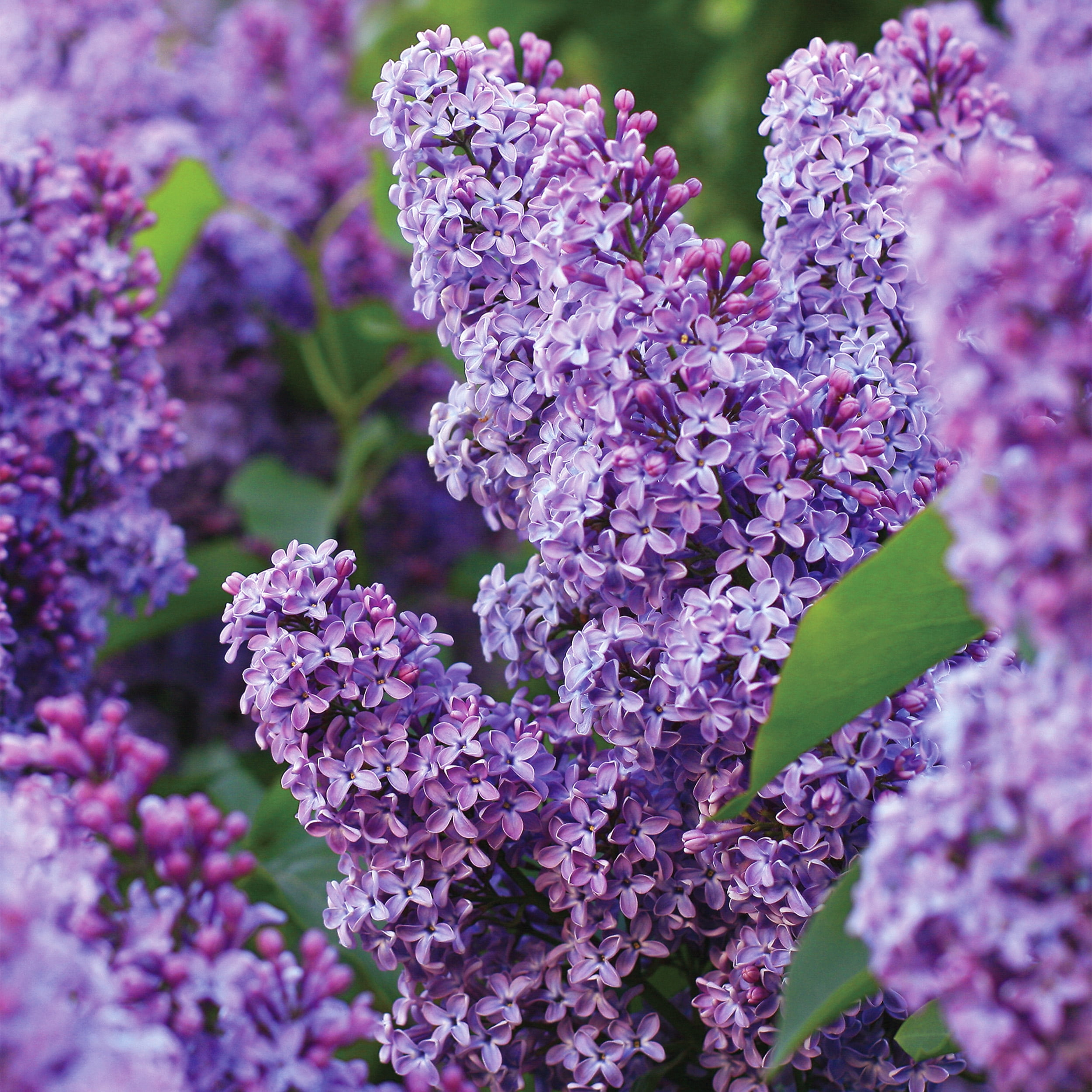When lilac bursts into bloom, it doesn’t just perfume the air—it announces spring in bright, fragrant clusters. Its cone-shaped flower panicles unfurl in shades of lavender, pink, or white, transforming hedges and borders into breathtaking drifts of color. More than a shrub, lilac embodies nostalgia, romance, and the promise of warmer days ahead.
Despite its stately presence, lilac is surprisingly easy to grow. With deep roots and vigorous habit, this classic shrub rewards gardeners with joyful spring displays year after year.

Portrait of the Lilac
Lilacs belong to the Oleaceae family, with Syringa vulgaris the most widely planted species. Originating in the Balkans, they’ve been cultivated in Europe and North America for centuries. Today’s garden varieties range from standard bushes to dwarf and tree-form cultivars, all prized for their intoxicating fragrance and long-lived blooms.
- Type: Deciduous shrub
- Family: Oleaceae
- Common names: Lilac, common lilac, French lilac
Foliage and Form
Lilacs develop an upright, multi-stemmed crown of heart-shaped, opposite leaves that emerge fresh green in spring. Their naturally mounded habit makes them excellent for hedges or standalone specimens.
- Height: 2–6 m (6–20 ft)
- Spread: 1.5–4 m (5–13 ft)
- Growth Habit: Upright, multi-stemmed shrub
Blooms and Fragrance
The hallmark of lilac is its panicles of tubular flowers, each cluster 10–20 cm long, opening in succession to extend bloom time. While most are lavender-purple, you’ll also find pure whites, deep mauves, and rare pink or blue-tinged varieties. The heady, sweet fragrance is a magnet for bees and a delight for gardeners.
- Bloom Time: Mid- to late spring (April–May)
- Color: Purple, lavender, white, pink, blue-tinted
- Fragrance: Strong, sweet, heady
The Right Time to Plant, Prune, and Enjoy Lilac
| Month | Planting | Flowering | Pruning |
|---|---|---|---|
| January | ❌ | ❌ | ✅ Light shaping (dormant) |
| February | ✅ (bare-root shrubs) | ❌ | ✅ Remove dead wood |
| March | ✅ | ❌ | ✅ Thin crowded stems |
| April | ❌ | ✅ (early bloom) | ❌ |
| May | ❌ | ✅ (peak bloom) | ✅ Deadhead if desired |
| June | ❌ | ✅ (late flush) | ✅ Clean-up prune after bloom |
| July | ❌ | ❌ | ✅ Remove suckers |
| August | ❌ | ❌ | ✅ Light maintenance prune |
| September | ✅ (container planting) | ❌ | ❌ |
| October | ✅ (container & bare-root) | ❌ | ❌ |
| November | ❌ | ❌ | ❌ |
| December | ❌ | ❌ | ✅ Light shaping if needed |
✅ = Recommended ❌ = Not advised
💡 Pro Tip: Always prune immediately after flowering—late pruning removes next spring’s buds.
Watering, Sunlight, and Environment for Lilac
Watering
- Deep, infrequent soaking to establish roots.
- Maintain moderate moisture in first 2–3 years, then drought-tolerant.
Sunlight
- Full sun (6+ hours/day) yields best blooms and scent.
- Tolerates light morning shade but avoid deep shade.
Indoor vs Outdoor
- Outdoor shrub only.
- Container grows possible, but needs full sun and ample root space.
Temperature
- Cold-hardy; requires winter chill to bloom prolifically.
- Best in temperate climates with cold winters (USDA zones 3–7).
Ideal Soil Conditions for Growing Lilac
| Soil Feature | Optimal Condition | Why It Matters |
|---|---|---|
| Soil Type | Rich, loamy, well-drained | Balances moisture and aeration |
| Texture | Light, friable | Promotes healthy root penetration |
| Drainage | Excellent | Prevents waterlogging and rot |
| Moisture | Evenly moist, not soggy | Supports robust growth |
| Soil pH | Slightly alkaline (6.5–7.5) | Improves nutrient uptake for blooms |
| Fertility | Moderate (organic matter rich) | Encourages vigorous flowering |
Common Problems & Solutions
| Issue 🐾 | Symptoms 🔍 | Solutions 🛠️ |
|---|---|---|
| Powdery Mildew 🌫️ | White coating on leaves | Improve air flow, prune crowded stems |
| Lilac Borer 🐛 | Wilting shoots, holes in stems | Remove and destroy affected wood |
| Leaf Spot 🍂 | Brown spots, leaf drop | Rake up debris, apply copper spray |
| Suckering 🌱 | Many small shoots at base | Regularly cut suckers to ground |
Lilacs fill spring gardens with color, scent, and nostalgia. Plant in sun-drenched spots, prune promptly after bloom, and enjoy a lifetime of fragrant, captivating clusters.